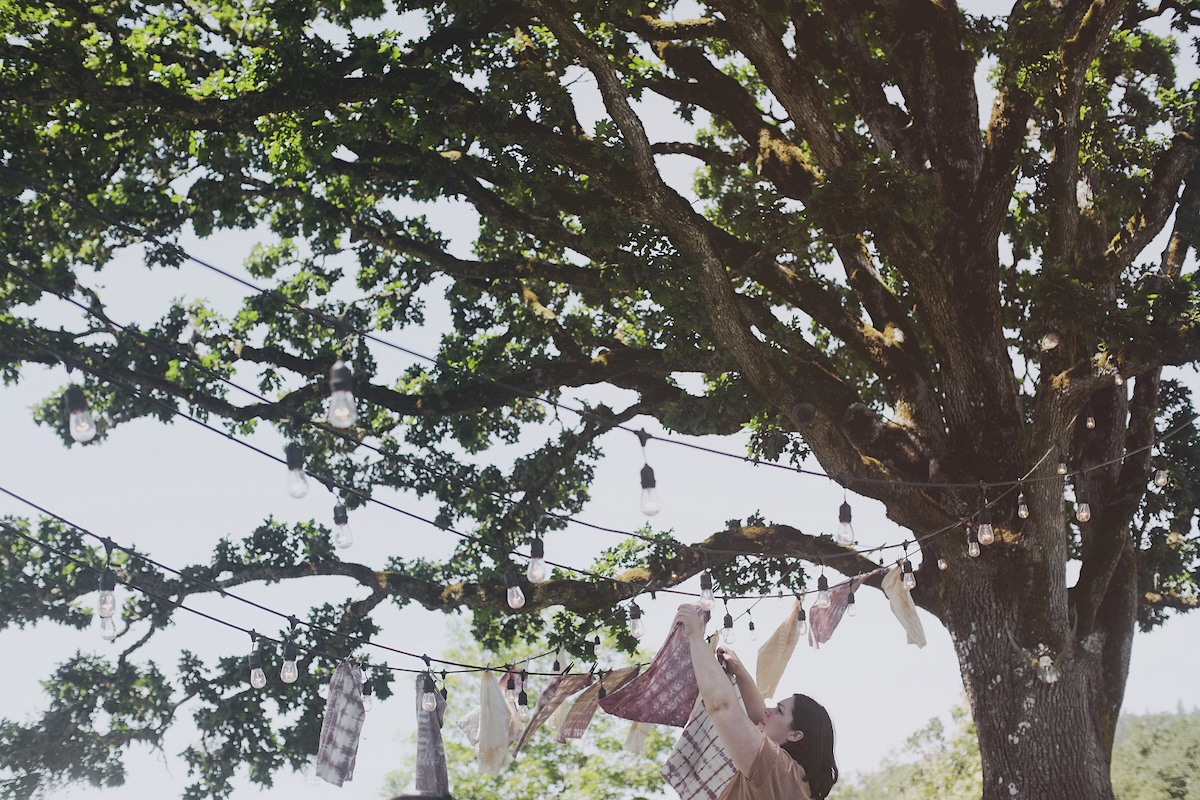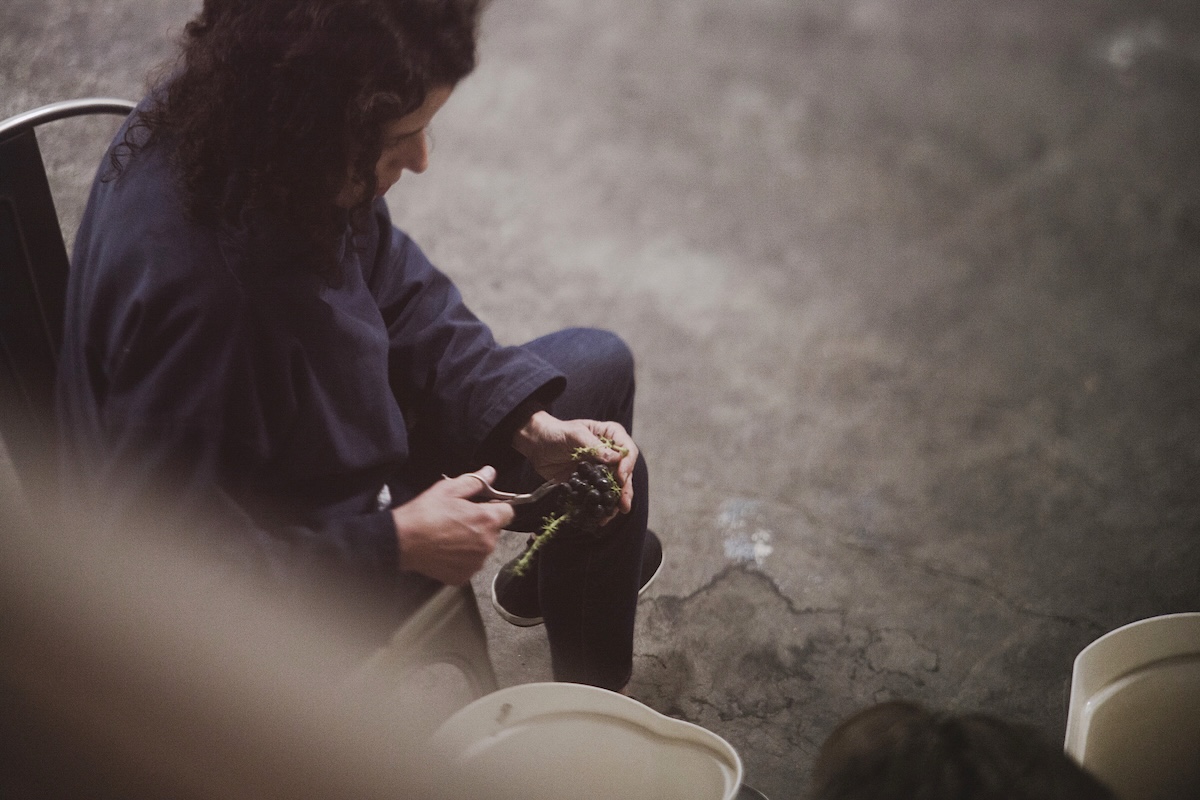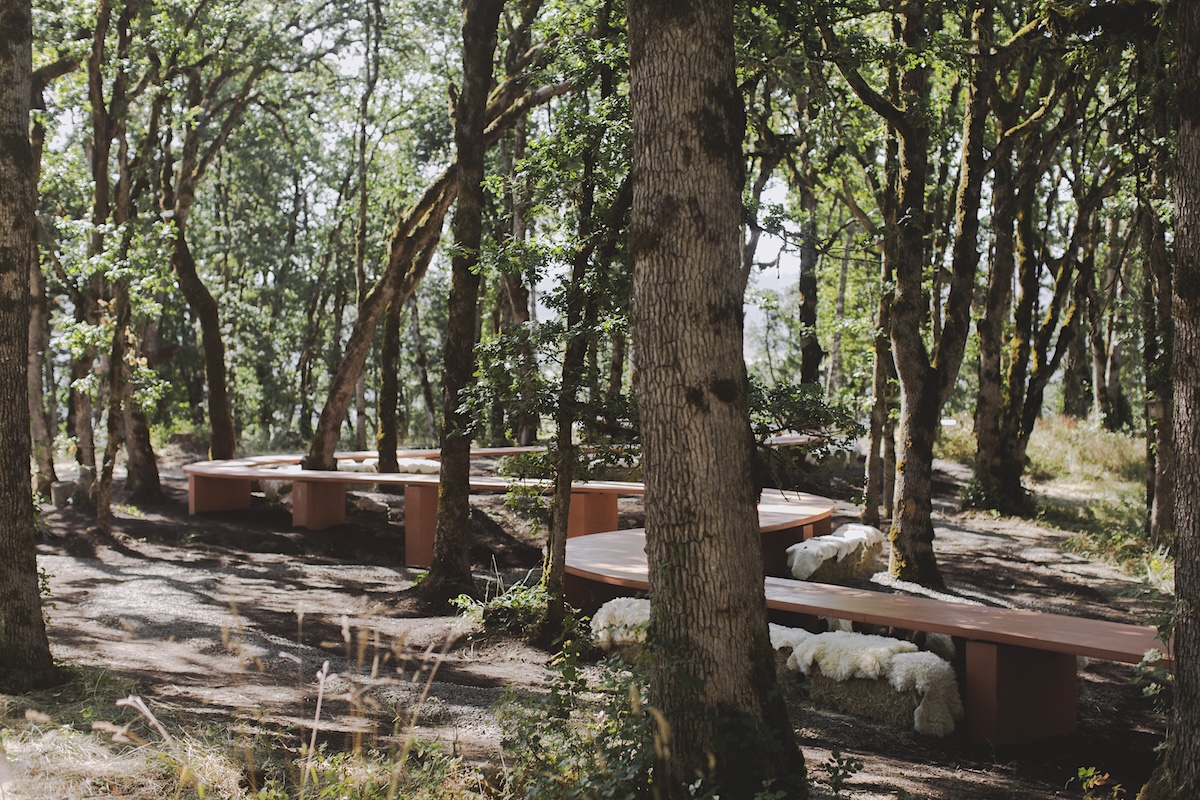This article runs in a section of The Tyee called “What Works: The Business of a Healthy Bioregion,” where you’ll find profiles of people creating the low-carbon, regenerative economy we need from Alaska to central California. Find out more about this project and its funders, Magic Canoe and the Salmon Nation Trust.
Maggie Harrison would often stop at her fenceline in Oregon’s Willamette Valley, fantasizing about buying a few acres of property next door.
A winemaker originally from California, Harrison purchased a 40-acre hillside property outside Salem, Oregon, that eventually became Antica Terra, a winery that today sells 36,000 bottles per year and has fans in LeBron James and Pink.
From the beginning, she farmed the land organically — using no pesticides or insecticides.
She and her small team also followed regenerative agriculture methods proven to combat climate change such as not tilling in most places, planting cover crops, and enriching the soil with compost.
But in 2012, with business booming, Harrison needed more space.
“You know, an 11-acre vineyard does not much of a business make,” she says now. “We really needed more land.”
One day, through a vineyard manager in the community, she found out the neighbouring property was owned by Craig Keeler, who had spent decades preserving his native white oak habitat.
“Could you ask Craig Keeler if I could buy a few acres?” Harrison asked the manager.
The answer came back swiftly. “Absolutely not.”

Although Harrison practised sustainability at her vineyard, she had a blind spot: the importance of oak trees to western Oregon.
The Willamette Valley — stretching 150 miles from Portland in the north to Eugene in the south — used to be covered with white oak savannah, a combination of tall grasslands and white oak (also known as Garry oak). Today, 97 per cent of the native white oak habitat has disappeared due to a combination of development, fire suppression, and conversion to vineyards or other types of agriculture — such as Christmas tree farms.
It took Harrison a decade to understand why the idea of cutting down any oaks on Keeler’s property went against every fibre of his being. She saw how important the native oak habitat was not only to Keeler, but to the entire Willamette Valley. The trees serve as habitat for hundreds of different species and wildflowers.
Harrison’s personal awakening was gradual, but now she scoffs at her former self, saying her desire to cut down any oaks was a mistake.
“He really watched me grow up,” Harrison said of Keeler.
Harrison eventually purchased the Keeler land, a 147-acre property with some vineyards and more than 80 acres of white oak savannah, in 2023. The purchase allowed her to expand Antica Terra to 45 acres under vine.
Newsletter Sign-up
Sign up for our newsletter to receive inspirational stories about people working to build a bioregional movement across Salmon Nation.
This hasn’t necessarily meant an increase in the number of bottles she makes per year — Harrison has long sourced grapes from other Willamette Valley vineyards. But it has allowed her to bring more of their farming in-house, meaning Antica Terra can source more grapes following Harrison’s preferences and standards. Even though Harrison predicts she could make an extra $24,000,000 per year by cutting down the historic oaks and planting new vineyards, the trees aren’t going anywhere.
“The only reason we were chosen to be the next stewards is because he knew that I would never cut down a single tree on that property,” she said.
Cheers to Sustainability
It takes a lot of work to run a vineyard.
Viticulture, the cultivation of grapes, is one of the most profitable forms of agriculture in the world, according to a 2018 report. Globally, the wine sector was valued at nearly $340 billion in 2020. To meet the demand, many vineyards are “managed intensively” to increase wine production. The process typically includes pesticides to banish pests and a lot of water. It’s hard to pinpoint an exact number, but some studies estimate that wineries can use as much as 632 liters of water per bottle, though it depends on the region where it’s sourced.
But a growing number of wineries in the Pacific Northwest are focusing on sustainability.
In B.C., a half-dozen wineries joined a relatively new industry-led program, the Sustainable Winegrowing BC certificate, focused on decreasing carbon emissions and using less water and pesticides. North of Oregon, 45 Washington wineries are participating in a similar state-led sustainability program.

Sustainability efforts like these are important for a number of reasons. Antica Terra, which is Demeter-certified, practises composting, animal husbandry, and organic agriculture. (The Keeler property is already certified by Demeter, an organization that ensures farms are following biodynamic practices. The original Antica Terra property is in the process of getting certified.)
The work at Antica Terra also goes beyond the standards. Maintaining its 88 acres of native oak savannah provides habitat to over 500 wildlife species, most of which are bugs. And where there are bugs, there are almost always birds. The species that live in white oaks include the slender-billed white-breasted nuthatch, the acorn woodpecker, and the western bluebird, which dines on the mistletoe that drapes over white oaks’ branches.
The birds use the oaks’ extensive branching for cover from weather and predators. They also use the branches’ surface area for foraging. And dozens of plants including camas and columbine grow under the oaks.
Ecologist David Craig, a biology professor at Willamette University, has become an expert on the white-breasted nuthatch and has helped support a group on campus called Growing Oaks, where students collect acorns and plant them up and down the Willamette Valley, including at vineyards. Craig said there are very few white oak groves left in Oregon and that it’s “extremely uncommon” for a former California winemaker like Harrison to move up to the Willamette Valley, buy land and not cut down oaks.
Weaving Wine With Nature
The decision is also significant considering the lack of publicly accessible white oak woodlands currently left in Oregon. Among the few remaining spots, there’s Miller Woods west of McMinnville, Bush’s Pasture Park in Salem and the new Graham Oaks Nature Park in Wilsonville, Craig said. The Keeler property had a history of hosting children from McMinnville elementary schools for a day of outdoor school — a tradition Antica Terra would like to continue, allowing the students time to find animal tracks, discuss the rich soils of the region, and learn about the oak trees.
“To be able to invite people in to experience the distinction of the landscape and its particular gifts is so much more exciting than planting another acre of vines,” Harrison said.

In many ways, Harrison has been able to use the existing trees to her advantage, serving as a case study on how to integrate wine with white oaks.
Last year, she hired designers to make a sinuous poured concrete table — seeded with stones from the site — through the forest, where the team now hosts wine tastings.
It’s a decision built around the historic oaks, spotlighting the trees as opposed to clear cutting them. Surrounded by the gnarled, lichen-covered oak trees, sitting on a hay bale with a glass of Pinot Noir, guests can be immersed in the natural beauty of the Willamette Valley as it was hundreds of years ago.
More broadly, the commitment to sustainability translates to Antica Terra’s employees, who have 100 per cent of their health insurance covered. It’s a contrast to the industry’s past, which has a history of exploitation among workers across the globe. “What [local Willamette Valley winemaker and regenerative agriculture expert] Mimi Casteel taught me is that you have to build an island. You just create a community of human beings where life looks just like you wish it looked.”
For instance, vice-president of communications Hannah Sullivan began working at Antica Terra seven years ago. After college, she studied textiles in India and knew a lot about natural dyeing and shibori folding, inspiring Harrison.
“I was like, ‘Can we have that here?’” recalls Harrison.
The two started collecting acorns from the oaks and made natural dyes with iron, which created a beautiful inky purple black. They also experimented with using the winery’s declassified wines as dyestuffs and used lichen to make a golden dye. From these creative investigations, they have made napkins for special dinners and created scarves for gifting.
“Any monoculture is not sustainable,” Harrison said. The winery also started using the oak grove as a gathering place, inviting artists and musicians into the forest.
Addressing the Voles
More recently, Harrison hired a vice-president of polyculture, Madeleine Rowan-Davis, who is in charge of how the land is farmed.
In addition to being certified organic and (mostly all) Demeter-certified, most of the property is also dry-farmed, meaning all the water it receives is from natural rainfall. (The parts that are irrigated are mostly young vines, which need a few years to establish their root systems.)
Rowan-Davis has also introduced cover crops — mostly later-blooming wildflowers — and she’s been expanding the winery’s grazing program, which allows ruminants and poultry to roam the grounds daily. The animals, of course, are doing double duty: they fertilize the vineyard with their poop and (in the case of sheep and goats) clear the weeds. Both cover crops and introducing animals are important tenets of biodynamic farming.

One of the biggest challenges at Antica Terra is a small but persistent rodent: voles. In years when parts of the Antica Terra vineyard were not tilled, the voles chewed around the roots of 50 per cent of the vines in those blocks.
Rowan-Davis’s two solutions: encouraging more raptors with a second layer of perches at a higher level and expanding the pig program, as pigs root around in the soil, disrupting vole burrows.
She’s also experimenting with flipping over the typical deer fencing, which has a tighter weave at the bottom to keep out raccoons and rabbits. This would allow larger predators like foxes, coyotes and bobcats to get in and eat the voles, while still keeping deer out.
But won’t those vole-hungry predators also munch on grapes?
“Some of them might — raccoons and foxes will eat grapes. Coyotes — well, yeah, that’s a risk, but none of them do as much damage to the vines as deer will,” Rowan-Davis said.
In the end, having a sustainable vineyard — just like having a sustainable business — is all about encouraging biodiversity.
Does a commitment to biodiversity in the vineyard create a better, more complex-tasting grape — and therefore wine?
To Harrison, the answer is simple. “Irrefutably. Again: diversity equals complexity,” she said.
This article runs in a section of The Tyee called ‘What Works: The Business of a Healthy Bioregion,’ where you’ll find profiles of people creating the low-carbon, regenerative economy we need from Alaska to central California. Find out more about this project and its funders, Magic Canoe and the Salmon Nation Trust.

